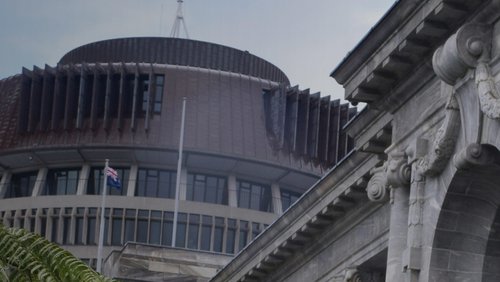25 Jun 2025
While some of the technology behind railway engineering and operations has been around for many years, the sector continues to evolve to address challenges including decarbonisation, digitisation, asset management and safety, and the risks of climate change.
Rail engineering and technology is one of the earliest of the industrial era engineering disciplines. Though steel wheels on steel rails still form the core – and deceptively simple – technology, railway engineering and operation continue to embrace modern technologies across a broad range of engineering and other disciplines. This includes an ever-improving understanding of the interface between wheel and rail to reduce wear and improve performance. This continues to improve efficiency and productivity as well as helping operators meet the changing requirements of the freight and passenger market. Additional challenges arise from the long life of the assets. For example, some bridges on the New Zealand network date back to the Vogel era of the 1870s, and decisions made now will influence performance for generations.
Improving productivity
One of the key aspects of rail economics, particularly in freight, is the need for larger and heavier trains to improve operating and asset productivity.
Engineering has delivered this through a range of technologies and asset management practices both “above the rail” and “below the rail”.
Starting at the head of the train, locomotive productivity has been achieved through locomotive designs including technologies to improve tractive effort (grip) using sophisticated software systems which control and optimise wheel slip (the low rolling resistance that makes for energy efficiency also provides a limit on the tractive forces), as well as the use of AC traction motors.
Train capacity has been progressively increased by metallurgical and design improvements. They have increased the capacity of drawgear and vehicles to take the significant longitudinal forces arising from the traction and braking as well as transient loads set up by the complex interactions of vehicle mass and up and down grades. These improvements have been assisted by technologies which provide guidance to the driver about optimum driving patterns which also reduce energy consumption, and in some cases provide automation of the train.
Operating productivity is also improved with higher axle loads. This involves both the wagon and track structure and formations (including bridges) to be able to take the point loads imposed, particularly in the steel-to-steel interface between the wheels and rails. New vehicles and structures can be designed to take the loads – existing structures need considered structural analysis to provide safe uprating of capacity.
Reducing risk
Rail is the safest of land transport modes, but expectations are high and with little or no tolerance from public and regulators to accidents (compared with the tolerance often extended to road operators). One of the biggest gains has come from improvements in signalling technology. First generation signals relied on the driver observing and acting on visual commands such as red lights (as does most road transport today). Progressively, this human interface is being minimised by direct use of the signal commands to control the train or override the driver if they fail to action the command. One of the latest technologies is the European Train Control System, known as ETCS, a standard for train control that integrates line side and cab equipment. KiwiRail and local metro operators are introducing the system for equipment used in higher density routes in areas such as Auckland. Challenges remain in lowering the risks where rail and cars and pedestrians meet.
New technologies
Digitisation of infrastructure, in particular signalling and communications with a systems engineering approach, have improved safety outcomes as well as operational management with an increased ability to manage complex networks and rapidly respond to incidents and keep people informed through realtime information delivery. The Internet of Things and other technologies have opened the extension of the integrated digital world to locomotives and rolling stock.
The next step is the use of AI. Like all parts of the economy, rail recognises the potential value of AI and the sector is now working through how to apply the data from the digital rail world to assist with, and even make, decisions.
The use of digital twins is becoming increasingly established, with realtime examples giving project sponsors confidence in the value of investing in the upfront costs being returned through reduced project risk and lifecycle asset management.
Climate change considerations
Rail represents a significant part of the solution to the world’s climate change challenge. The low rolling resistance of steel on steel is the most fuel efficient (and hence the lowest CO2 emissions) of land-based transport. Rail, like all forms of transport, is currently working through the options to decarbonise the sources of traction through a mix of hybrid energy sources, battery, hydrogen and direct electrification through overhead. What is becoming apparent is that there is no global solution, and specific solutions are likely to be very nation- and route-specific. What is also clear is there are many equipment supply companies pushing their particular technologies – a challenge for engineers to keep analysis to the fore in the face of sales pitches to management. However, rail – like all land-based infrastructure – is subject to the impact of more frequent and intensive weather events and higher sea levels. A lot of effort is being put into making routes more resilient by reducing the risk of landslips near rail routes and improving storm driven water flows near railway embankments and structures.
CORE 2025
Delivering productivity improvements and major projects requires competent engineers with current knowledge and understanding to design, build and manage these assets, accessing and applying local and international knowledge to each operation.
The Railway Technical Society of Australasia (RTSA), a joint technical group of Engineers Australia and Engineering New Zealand members, provides a mechanism for sharing and developing this knowledge. Since 1981 the RTSA has organised a biennial conference on railway engineering and operational topics. Known as CORE (Conference on Railway Excellence) it is the only conference in the region that provides peer reviewed papers covering all aspects of railway engineering, technology and management. Once presented, all papers go into the Rail Knowledge Bank, a website that contains significant content covering all aspects of railway engineering practice. CORE 2025 will be hosted in Auckland in August, giving New Zealand’s railway industry the opportunity to showcase achievements and to access the latest in rail engineering and management. The theme is Kaitiaki – Guarding the Future, reflecting the location of the conference, plus the guardianship rail engineers have over rail as a transport solution – sometimes in the light of political and governance indifference.
CORE 2025 received 155 abstracts for consideration, with 90 accepted, 21 reserves and 13 selected as posters. The papers selected provide a good coverage of academic research and applied research and practice, with many New Zealand papers making the cut. The themes emerging include the decarbonisation of rail, implementation of digital tools in projects, maximising life and capacity of existing assets, mitigation of and management of extreme weather events, improving rail safety through improved risk analysis and safety systems. Keynote speeches cover insights from a leading rail freight custome, innovations in track infrastructure and AI.
John Gardiner FEngNZ, Managing Director of Building Confidence Ltd, is Chair of CORE 2025.
This article was first published in the June 2025 issue of EG magazine.







